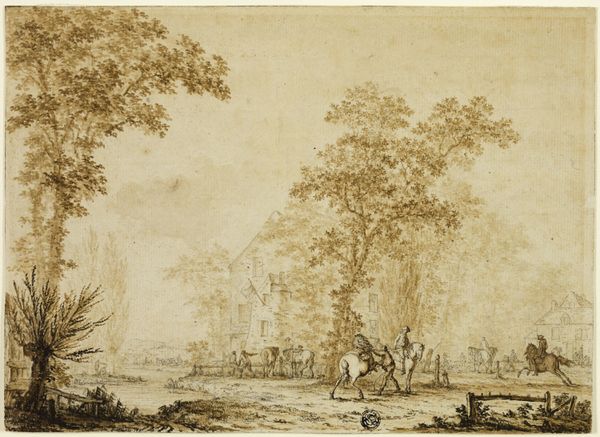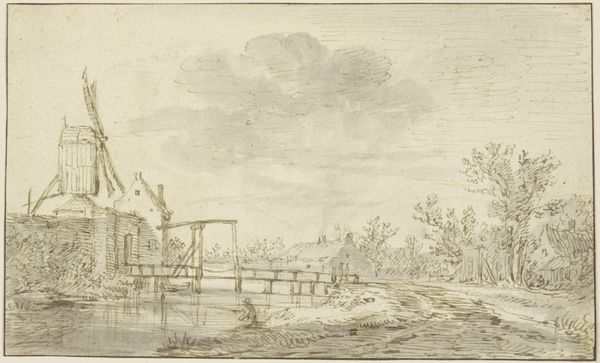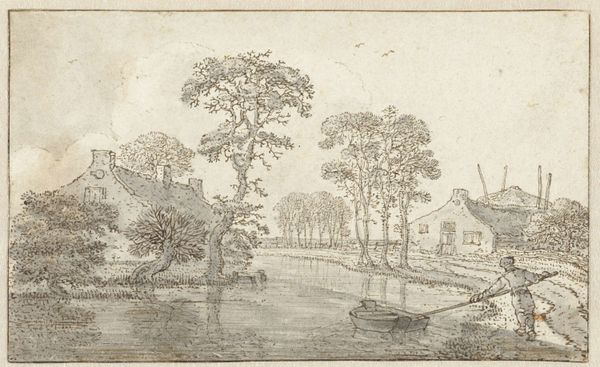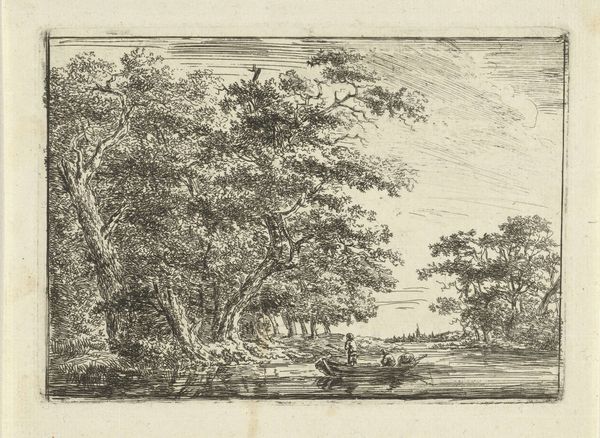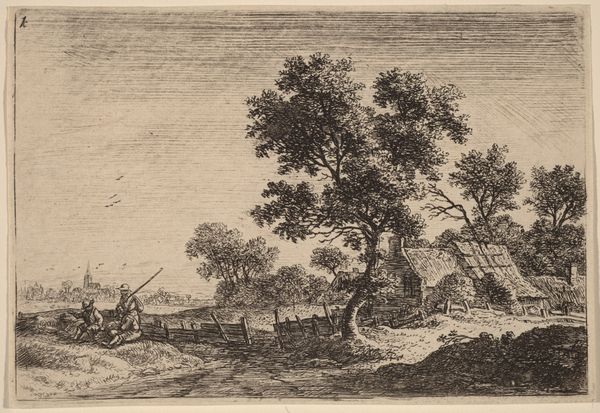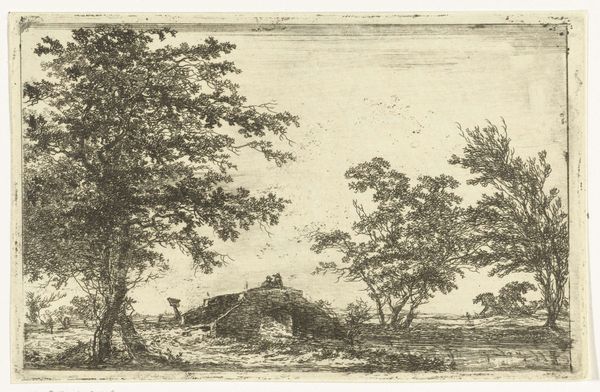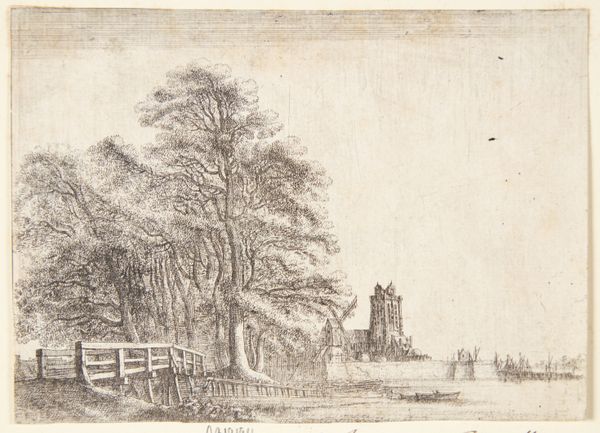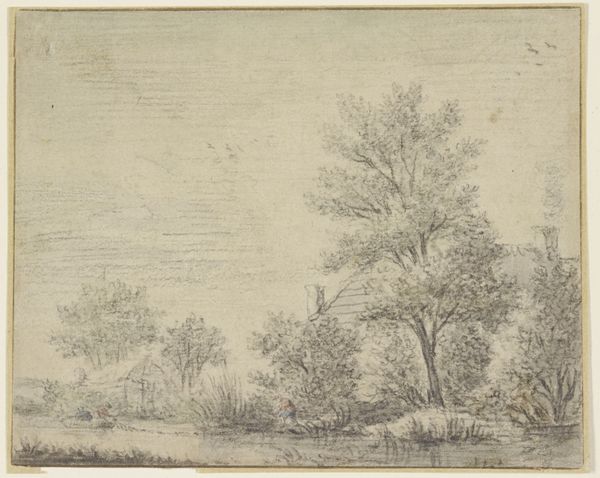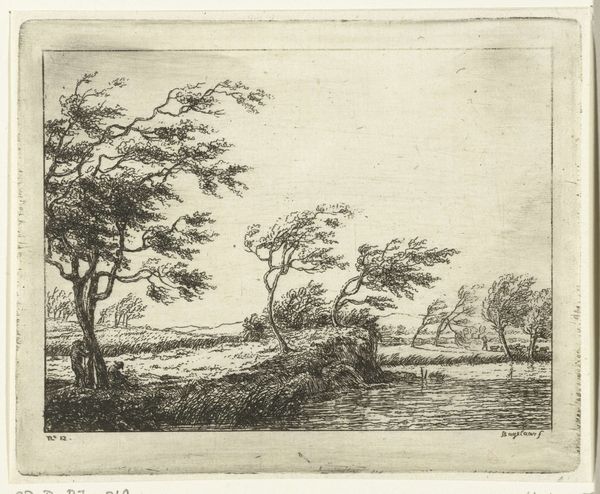
print, etching
#
dutch-golden-age
# print
#
etching
#
landscape
Copyright: National Gallery of Art: CC0 1.0
Curator: Anthonie Waterloo's etching, titled "Churchyard at the Waterside," presents a serene landscape typical of the Dutch Golden Age. The date is unknown but we can see the classic components of its time. Editor: Yes, that initial impression is of calm, almost meditative stillness. The composition directs your eye gently from the detailed churchyard on the left to the expansive, airy sky on the right, balancing the earthly and ethereal elements. Curator: Precisely. Waterloo was exceptionally skilled at capturing the essence of the Dutch landscape. This particular piece offers insights into the role of the church within Dutch society at the time— a quiet presence integrated with nature and the waterways. It is a world opening up with new ideas following years of war. Editor: It’s amazing what he accomplishes with line work alone. Look how he differentiates the textures—the dense foliage, the solid stonework of the church, the almost palpable stillness of the water. He truly understands how light shapes form. I find how Waterloo uses the verticality of trees in combination with architectural structures on the horizon striking. Curator: Consider too the burgeoning print market, which afforded artists like Waterloo opportunities for wider dissemination of their work. Prints like these democratized art consumption in ways previously unseen. These landscapes were no longer just for the wealthy elite. They offered ordinary citizens some semblance of connection with places both near and far. Editor: True, and his choice to feature ordinary figures in the foreground invites a broad audience to place themselves within the scene. The very minute variations in depth through controlled biting and layering create the optical illusion of reality in an otherwise static medium. The scale between the human and nature, like the size of boats versus open waters, creates an impression. Curator: Ultimately, Waterloo's landscape encapsulates the core values of the Dutch Golden Age: trade, exploration, community and an appreciation for the beauty of the local land. It's accessible and representative of an era's values. Editor: And viewed formalistically, the success here lies in his command of form. His etching provides depth that is both sophisticated and, because of its seeming naturalism, incredibly appealing.
Comments
No comments
Be the first to comment and join the conversation on the ultimate creative platform.

